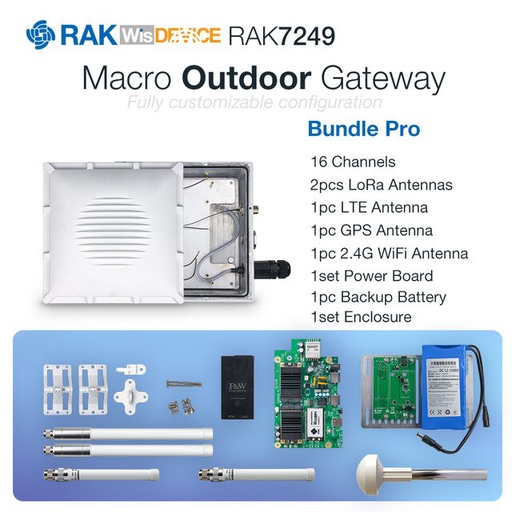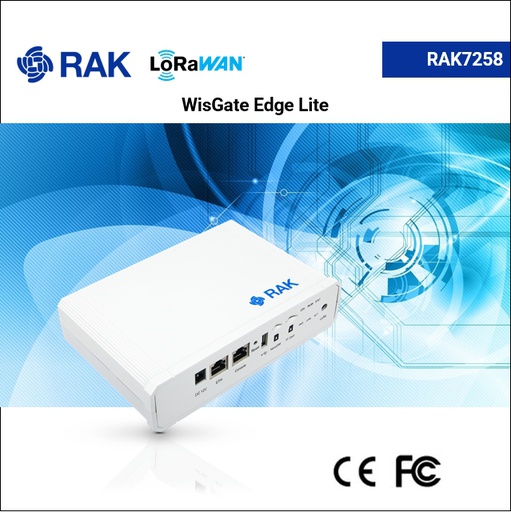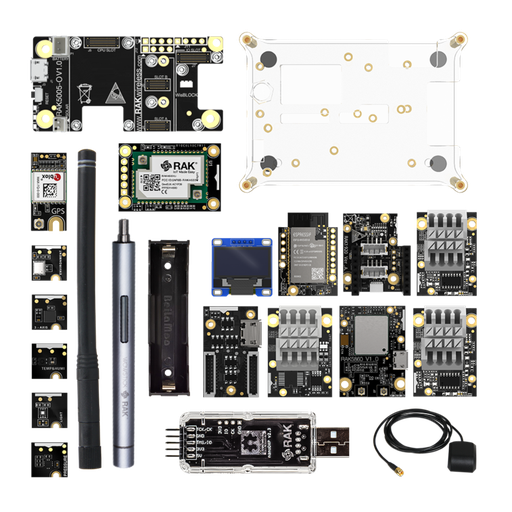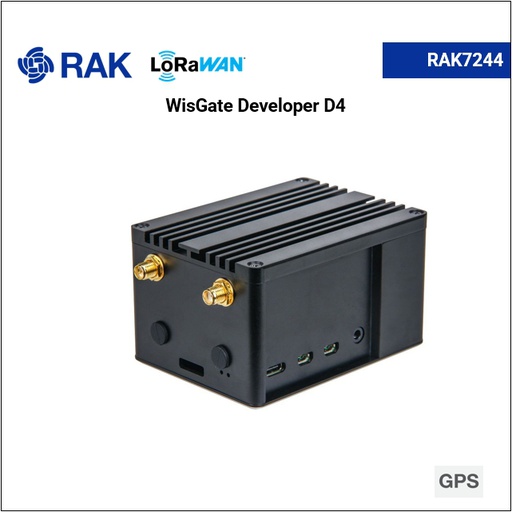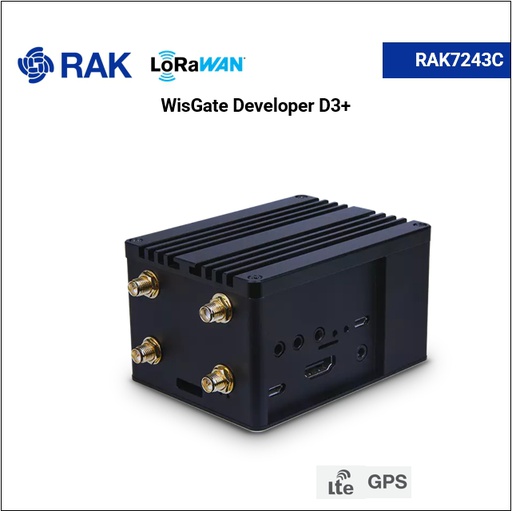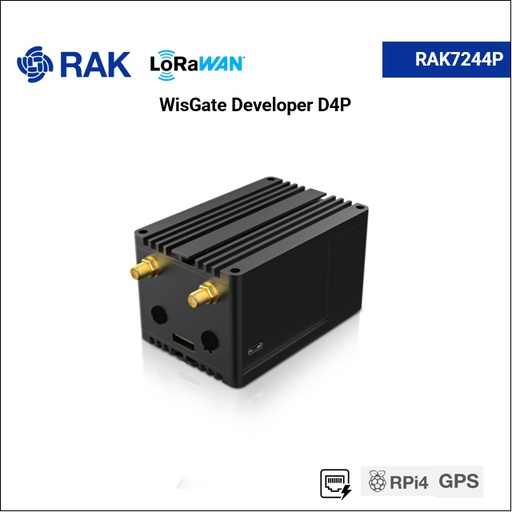A Brief Comparison of What RAKwireless Has to Offer
The purpose of this article is to give the reader sufficient information in order for him/her to be able to confidently pick the right gateway from RAKwireless' line of devices. Upon reading it, one should be familiar with both what features are available and which particular product has one or more of them combined.
The articles will be split into several sections.
Section 1. This will discuss the main factors/features one should take into account when picking a gateway, to be discussed in detail:
- Power consumption
- Concentrator type
- Number of channels
- Antennas
- Range
- Backhaul connectivity
- Power: PoE, Battery, Solar
- Operating temperature range
- Weather resistance
- Platform compatibility: Packet Forwarder, MQTT Bridge, Basics Station
- Firmware features: Interface, Remote Access, etc.
This section will also list the different gateways RAKwireless offers and what categories they are suitable for (indoor vs. outdoor or developer vs. commercial).
Section 2. A rundown of possible deployment scenarios, with recommendations for which gateway (based on the features listed above) is best for each one.

Section 1: Factors/Features to Take Into Account
There are more factors that come into play. However, the ones reviewed here are considered the most important and come into play in a greater number of deployments.
Power consumption
IoT (and specifically LoRaWAN®) is all about minimizing power consumption. Low energy operation is generally a sought-after feature for end nodes, however, this does not mean that gateways can't be power hogs.
The benefits of LoRaWAN make it uniquely suitable for solutions in unorthodox scenarios. It is common to have a whole network where not only are the end nodes battery/solar-powered, but the gateways are too. Deployments in remote areas, where mains power is not available, are actually exactly where LoRaWAN shines.
RAKwireless gateways differ in power consumption depending on the model and features. However, they remain within the 6W peak power consumption limit. Some competitors are rated up to 15W, thus, it is safe to say having a value below 10W is considered a measure of good performance.
- Edge Series gateways - 6W peak
- Developer Series gateways - 5W peak
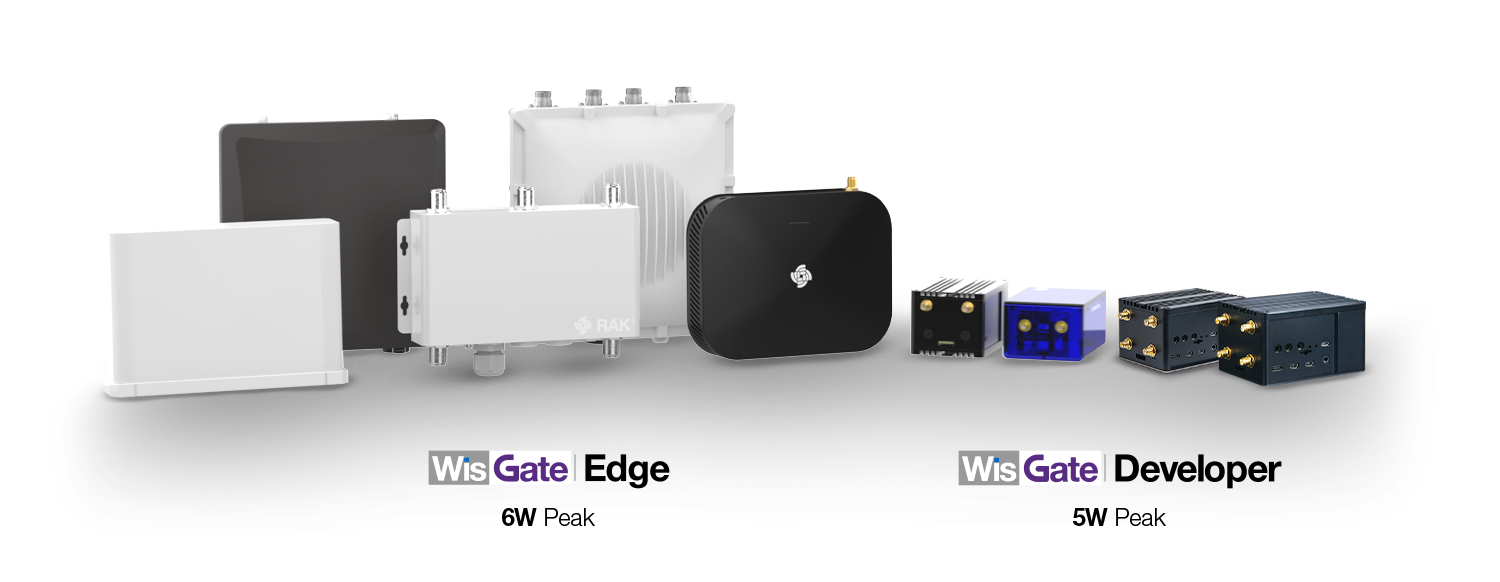
Concentrator Type
his is the RF front-end of your gateway. It allows you to simultaneously process incoming LoRa frames, demodulate and do signal processing, etc. In short it is the RF core of the gateway.
As Semtech is the only manufacturer of digital baseband processors, there should be no chance for you to get one that is incompatible with a given platform. Currently, 3 variants are available with a 4th one to be released soon (SX1303).
- SX1308: This is the lowest tier variant. It has the least sensitivity and maximum output power. It can still process 8 channels simultaneously like the rest and supports SF7 to SF12.
- SX1301: Designed to be at a higher tier than SX1308, this has greater sensitivity and maximum output power. It is meant for outdoor gateways to provide better range. This is the most used variant until now.
- SX1302: This variant is the successor to the SX1302. It offers lower current consumption, simplifying the thermal design of the concentrator, which leads to cost reduction. Additionally, it can handle more traffic as it operates at SF5 to SF12. It also has added features, like increased clock stability and dedicated precise timing features. It is starting to dominate the market and is utilized in gateways produced at present.
- SX1303: This variant features all the improvements of the SX1302, offering lower current consumption and heat production, but it also introduces an additional feature. The Fine Timestamp capability that enables Time Difference of Arrival (TDOA) network-based geolocation is now available for concentrator modules that utilize this Semtech chip.
As a summary, SX1302 is what you want to future-proof your network.
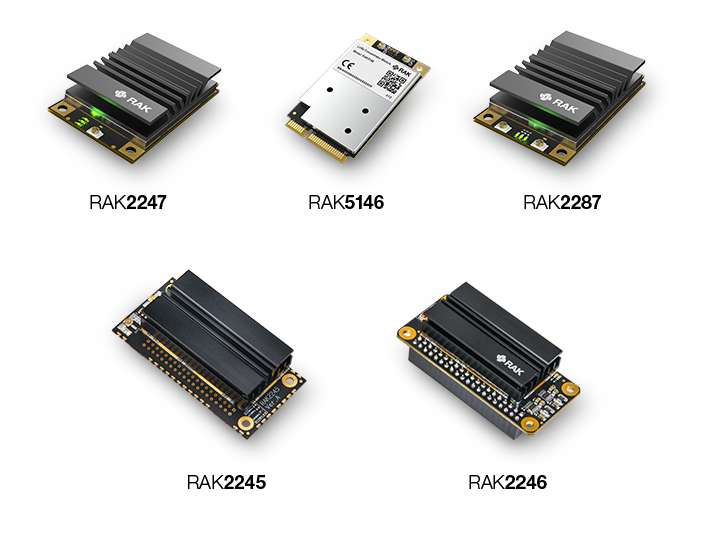
RAKwireless offers the following products, based on SX chip and form factor:
| Concentrator Model | Gateway Model | SX Chip | Form Factor |
|---|---|---|---|
| RAK2245 | RAK7243/43 (Developer) | SX1301 | Raspberry Pi HAT |
| RAK2246 | RAK7246 (Developer) | SX1308 | Raspberry Pi HAT |
| RAK2247 | RAK7240/49/58 (Edge) | SX1301 | mPCIe card |
| RAK2287 | RAK7248/68(Developer+Edge) | SX1302 | mPCIe card |
| RAK5146 | RAK7289 Edge | SX1303 | mPCIe card |
As of now, we have a decent mixture of gateways utilizing all 4 Semtech chips. Naturally, our latest models in each line—be it the Edge or Developer—utilize the SX1302, which has become the most sought-after solution. We even go a step further by introducing the SX1303 ahead of time, with the RAK7289, in order to provide cutting edge performance. This is actually one of the characteristics of our latest iterative upgrade for each model with an up-to-date concentrator.
Number of Channels
Generally, you have 2 categories:
Single-Channel Gateways
These are mostly a thing of the past or used only in lab conditions for testing, mostly via converting a node to forward packets. As they are single-channel, they can only listen to 1 frequency channel, which severely limits their node capacity. RAKwireless, being one of the prominent LoRaWAN hardware manufacturers, does not offer such devices.
Multi-Channel Gateways
These are normally 8-channel gateways, however there are also options for 16 channels, like the RAK7240/49/89. These are the standard. They can listen on multiple channels at the same time over multiple spreading factors processing the data of multiple nodes. All RAKwireless gateways are at least 8 channels.
Antennas
As with the gateways, the LoRa antennas are either indoor or outdoor.
Indoor
Indoor antennas have lower gain, since they are smaller and meant for gateways with less coverage. What RAK offers is around the 2.5dBi range. They use smaller connectors, like the RP-SMA in the case of what RAK offers.
Outdoor
Outdoor antennas are significantly bulkier, more robust, and with higher gain. RAK offers outdoor antennas, starting form 3dBi all the way to 8dBi. These utilize an N-type connector, as they are heavier and more mechanical stability is required (also ingress protection).
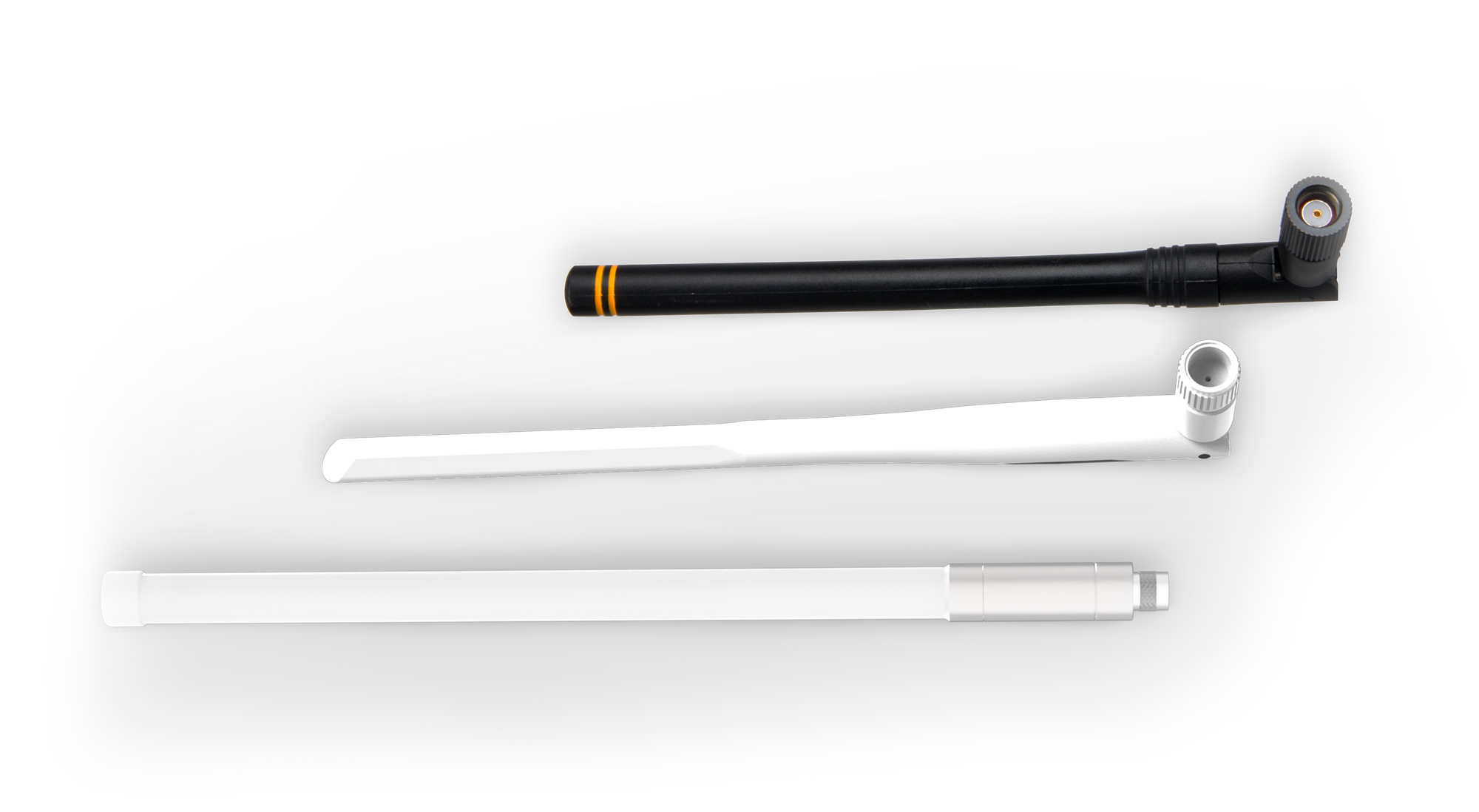
| Antenna Gain [dBi] | Outdoor/Indoor | Connector |
|---|---|---|
| 2.0 | Indoor | RP-SMA |
| 2.3 | Indoor | RP-SMA |
| 3.0 | Outdoor | N-type |
| 5.8 | Outdoor | N-type |
| 8.0 | Outdoor | N-type |
You can have an indoor gateway with a big outdoor antenna using an extension cable, for example. This is not a common case as it takes a lot of space, is inconvenient to mount indoors, and disrupts the aesthetic of the space. However, if range is a must, the higher gain is worth it.
Range
Generally, range is equated with the antenna. This is mostly true—the greater the gain of the antenna, the farther a potential node can be from the gateway and still have decent reception. There are also other factors that influence this. For example, the location of the antenna/gateways is important. If it is outdoors and on a very high rise, it will have less obstructions and greater Line of Sight (LoS).
One negative is that the higher the gain, the more directional the antenna is. So, while it can reach further, the coverage area itself is reduced.
Interference also plays a large role. If your network is dense with a lot of nodes, there will also be plenty of interference, which would mean you will have reduced range.
In summary, your range will always be increased by utilizing a bigger antenna (more gain). However, other factors will influence it, so do not expect a linear increase in performance.

The following table is going to represent the potential range of RAKwireless gateways:
| Gateway Model | Gateway Type | Range |
|---|---|---|
| RAK7240/49/89 | Outdoor | High |
| RAK7248/Helium Miner | Indoor/Outdoor (with outdoor enclosure) | Medium/High |
| RAK7243/44 | Indoor/Outdoor (with outdoor enclosure) | Medium/High |
| RAK7258/68 | Indoor | Medium |
| RAK7246 | Indoor | Low |
Backhaul Connectivity
There are 3 main methods for transferring data from the gateway to the cloud, as far as connection types go. You can either use Ethernet, Wi-Fi, or Cellular. There are gateways from different brands that can use any one of the aforementioned or a combination of any 2, or all 3. All RAKwireless gateways at present offer Wi-Fi—the difference is whether there is Ethernet and/or Cellular.

| Gateway Model | Ethernet | Wi-Fi | Cellular |
|---|---|---|---|
| RAK7240/49/89 | + | + | Optional |
| RAK7258/68 | + | + | Optional |
| RAK7248/Helium Miner | +/+ | +/+ | -/- |
| RAK7243/44 | + | + | Optional |
| RAK7246 | - | + | - |
As for which gateway is best, depending on its connectivity options, there is no right answer. It all depends on the use case scenario. Simply get what you need or what is available (Internet service provider offers). One exception is interface failover. The more connectivity options you have, the more likely it is that your gateway will stay connected, even if one of the connections fails.
Power: PoE, Battery, Solar
These can make a large difference in how easy it is to install a gateway, or if it is at all possible. Having PoE is a must for me. It makes it incredibly convenient to install gateways that will be connected via their Ethernet interface. Batteries and solar are only useful for applications away from locations with mains power. Generally, they are used sparsely, as the cost is pretty high. You need to have both the battery and solar panel for the system to function.
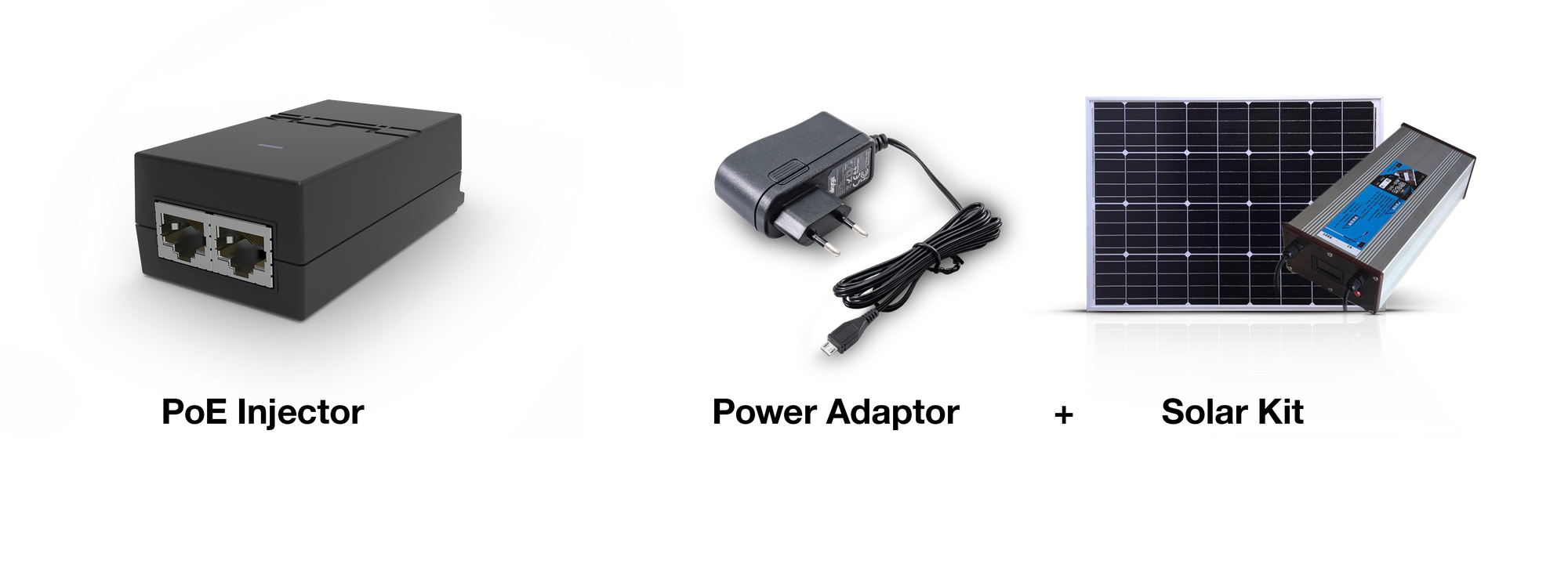
| Gateway Model | PoE | Battery+Solar Kit |
|---|---|---|
| RAK7249/89 | + | Optional |
| RAK7240 | + | + |
| RAK7258/68 | + | - |
| RAK7248/Helium Miner | -/- | -/- |
| RAK7243/44 | Optional | - |
| RAK7246 | - | - |
Operating Temperature Range
As one might expect, the outdoor gateways can survive survive at lower temperatures because of their industrial enclosures, whereas the indoor gateways are more limited in this regard.
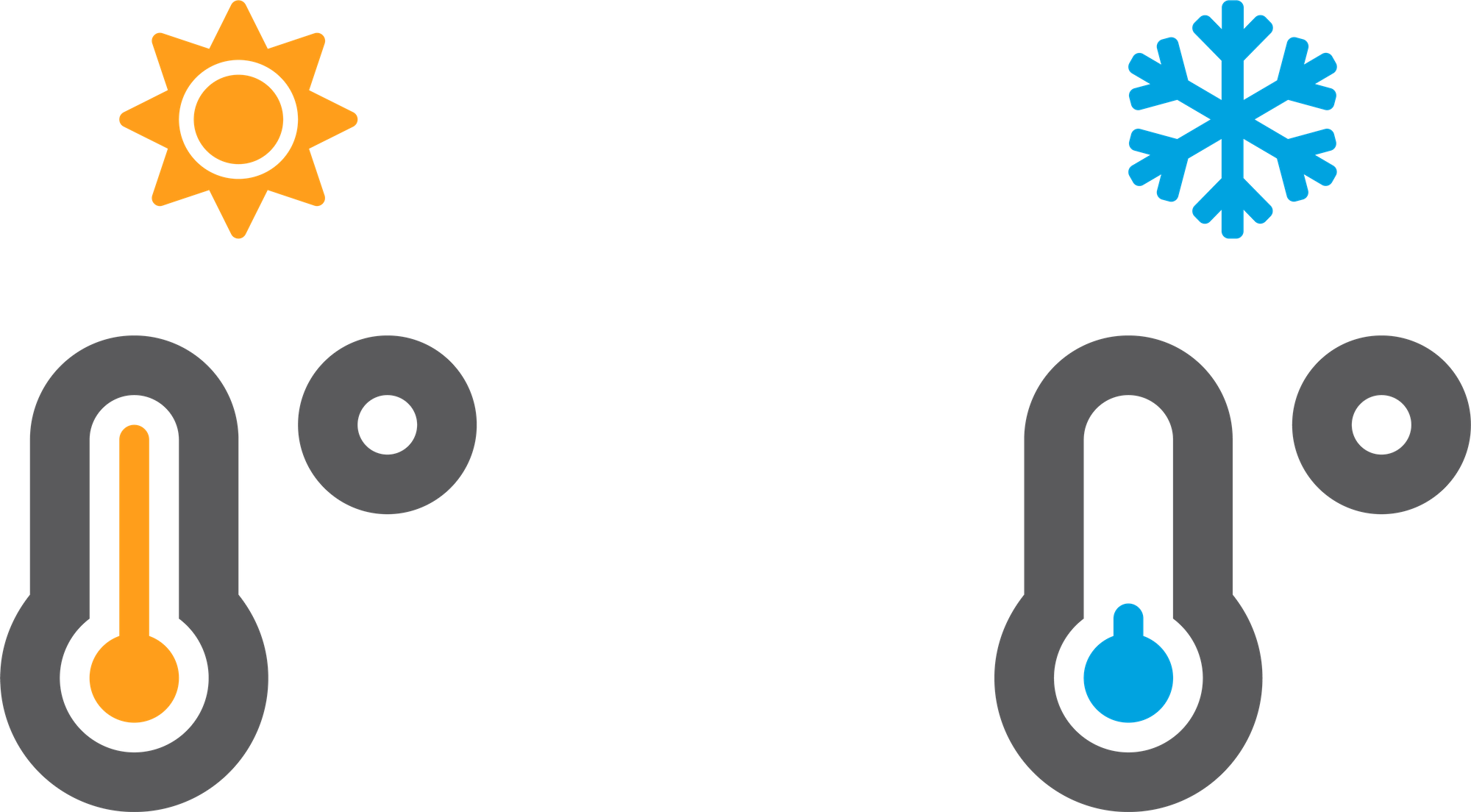
| Gateway Model | Temperature Range |
|---|---|
| RAK7249/89 | -30 to 55 ˚C |
| RAK7240 | -20 to 55 ˚C |
| RAK7258/68 | -10 to 55 ˚C |
| RAK7248/Helium Miner | 0 to 55 ˚C |
| RAK7243/44 | 0 to 55 ˚C |
| RAK7246 | 0 to 50˚C |
Weather Resistance
Again, as with the temperature, outdoor gateways are more resistant to harsh weather conditions with better ingress protection.

| Gateway Model | Temperature Range |
|---|---|
| RAK7249/89 | IP67 |
| RAK7240 | IP65 |
| RAK7258/68 | - |
| RAK7248/Helium Miner | - |
| RAK7243/44 | - |
| RAK7246 | - |
Platform Compatibility: Packet Forwarder, MQTT Bridge, Basics Station, Built-In LoRa Server, Remote Management (WisDM)
Depending on the class of gateway, it could be just a packet forwarder or have a number of features that complement its main functionality.
The most impactful features are: the presence of an MQTT bridge and support for Semtech's Basics Station. Having these 2 on board will ensure that you will be able to connect to any third party platform, as it will be compatible with at least one of the methods for forwarding your data.
Additionally, a nice feature is having a Built-in LoRa Server integrated into the gateway. This turns it into a stand-alone LoRa Base Station that can aggregate data and, at the same time, decrypt and decode it on the spot.
A year ago, such a feature set was more a novelty than a requirement. Now, it is a must. For example, even TTN has transitioned to their v3 stack with full support for Basics Station.
The MQTT bridge, on the other hand, is an invaluable tool as it allows you to forward your data to an end-point. It is easy to configure and its sub/pub mechanics are both efficient and bandwidth sparing. It is a great solution for off-grid LoRaWAN networks utilizing a cellular backhaul traffic, which can be expensive.
Finally, a feature that will separate the high class products from the rest in the future: management. As networks scale and become larger, it will be essential to manage and monitor them remotely, as on-site maintenance will incur heavy costs in time and resource. RAKwireless, being the forward-thinking company that it is, has thought of this already and is working on their remote management platform called WisDM.
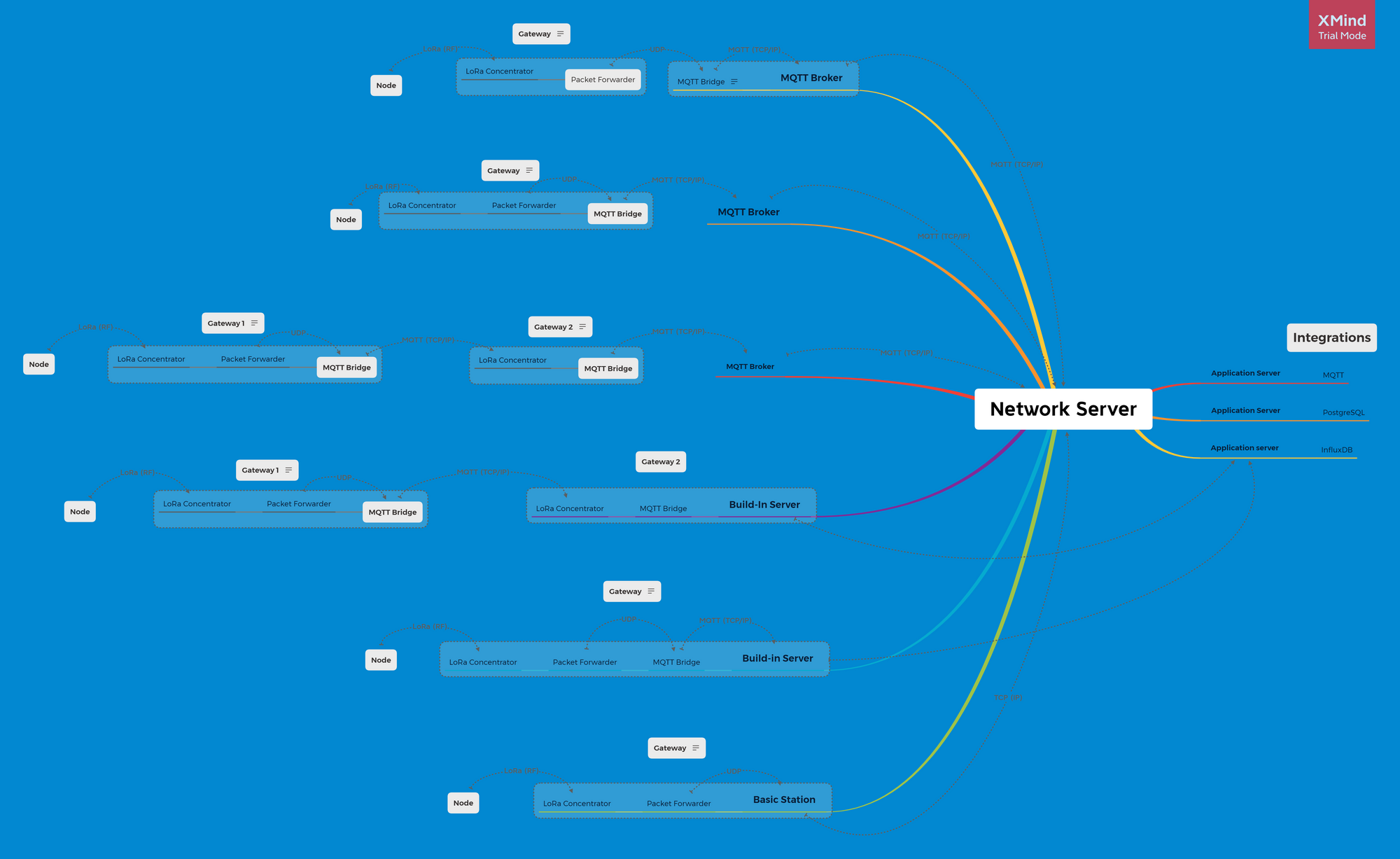
| Gateway Model | MQTT Bridge | Built-in Server | Basics Station | Remote Management (WisDM) |
|---|---|---|---|---|
| RAK7249/89 | + | + | + | + |
| RAK7240 | + | + | + | + |
| RAK7258/68 | + | + | + | + |
| RAK7248/Helium Miner | +/- | +/- | -/- | -/- |
| RAK7243/44 | + | + | + | - |
| RAK7246 | - | - | - | - |
Firmware Features: Interface, Remote Access, etc.
These are mostly dependent on the class of gateway. As you can see, the Edge line is more feature-packed and has a more intuitive interface, whereas the Developer line is more streamlined and relies on the user to provide the additional features if he/she desires. In short, the Developer gateways are perfect for first-time adopters and testing, whereas the Edge gateways are more of a long-term commercial solution.
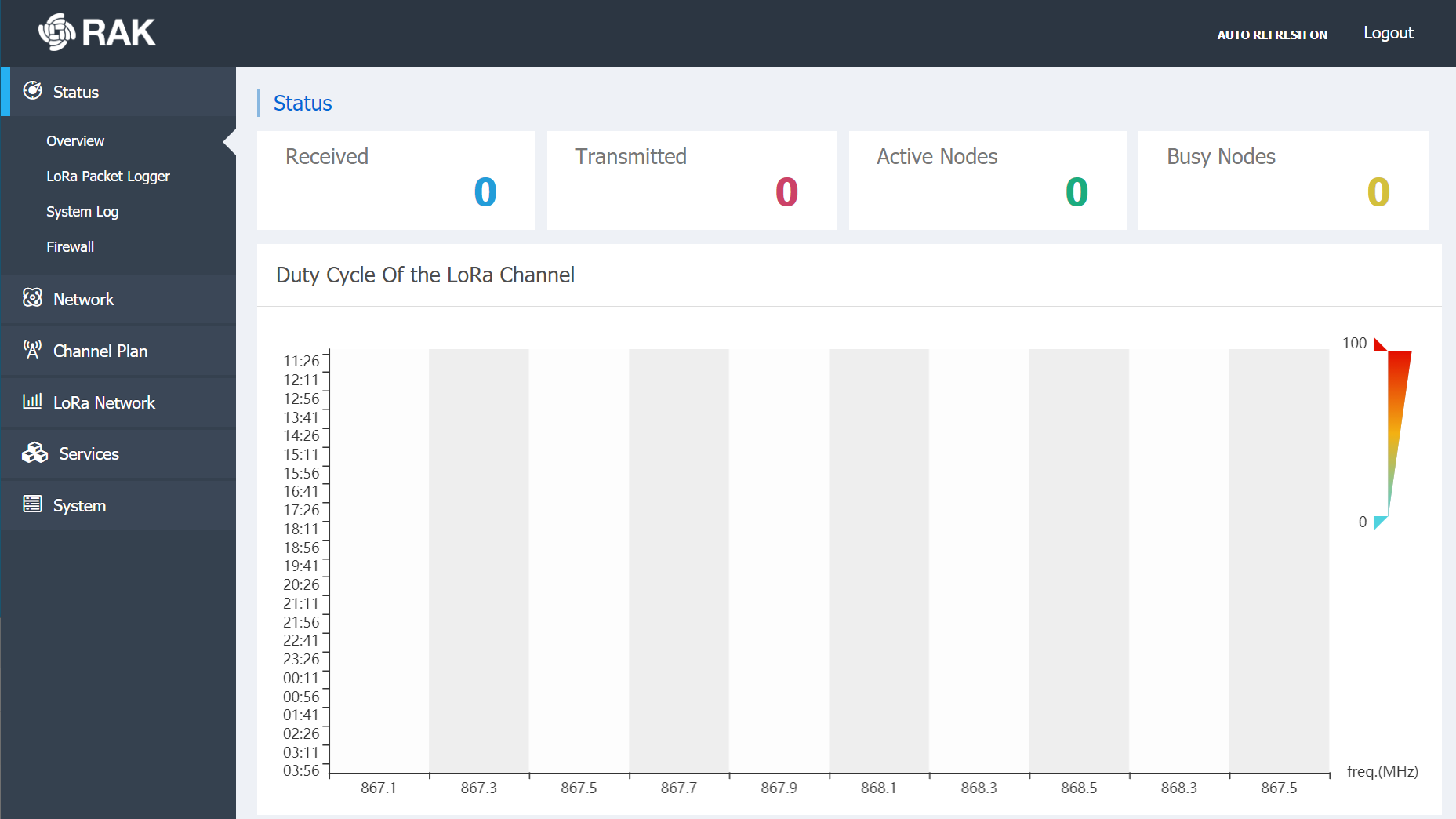
| Gateway Model | Interface | Remote access | Packet buffer | Interface failover | Performance statistics | OTA Firmware Upgrade |
|---|---|---|---|---|---|---|
| RAK7249/89 | Web UI | VPN Client | + | + | + | + |
| RAK7240 | Web UI | VPN Client | + | + | + | + |
| RAK7258/68 | Web UIVPN Client | VPN Client | + | + | + | + |
| RAK7248/Helium Miner | CLI/Phone App | Optional/- | -/- | -/- | -/- | -/+ |
| RAK7243/44 | CLI | Optional | - | - | - | - |
| RAK7246 | CLI | Optional | - | - | - | - |
Section 2: Best in Class Gateways
So, now that the features have been listed and examined, we come to the most important question of which gateway is best suited for which application. It is self-explanatory that there is no single perfect gateway. However, there are ones that are uniquely suited for certain use case scenarios.
Some of the more interesting use cases are:
- Best for rapid deployment
- Best outdoor gateway
- Best indoor gateway
- Most feature-packed gateway
- Most cost efficient gateway
- Best gateway for large scale deployment
- Most future-proof gateway
- Best for first-time adopters
- Best for developers and custom firmware
Note: The RAK7268 is the upgraded RAK7258, and the RAK7289 is the upgraded RAK7289. For the purpose of determining the best in class solution, these upgraded models and their predecessors will be considered as 1 entity.
Best for Rapid Deployment: RAK7258/RAK7268
This gateway is easy to configure due to its intuitive Web UI. It is also easy to deploy due to the presence of PoE. Since it is meant for indoor use with a light and compact design, it can be installed in almost any office or home. Great for quickly and efficiently deploying a LoRaWAN network without the need of deep technical know-how.
Runner-up: RAK7240
Best Outdoor Gateway: RAK7249/RAK7289
This tank of a gateway does not hold back in regards to both functionality and robustness. It has it all: easy configuration, advanced features, top-of-the-line range, weatherproofing, multiple connectivity and power options, remote access and management, and more. The only two characteristics that make it unsuitable for a win in all the rest of the categories are cost efficiency and ease of deployment. Now, it is still best in class in terms of performance and cost, compared to other manufacturers. However, there are other RAKwireless offerings that are more cost efficient and easier to deploy. (This is mainly due to the nature of outdoor deployment, not the gateway itself.) In short, it provides unmatched performance at a reasonable price.
Runner-up: RAK7240
Best Indoor Gateway: RAK7258/RAK7268
Again, the winner in the third category is the RAK7258. Great range, packed with features, easy to configure, cost efficient.
Runner-up: RAK7248
Most Feature Packed Gateway: RAK7249/RAK7289
It comes as no surprise that this is the winner in this category—RAKwireless has made a good product and there is no denying it. This gateway can be outfitted with an internal back-up battery system and has an optional solar power kit. These features are reserved only for the champion in the RAKwireless gateway line.
Runner-up: RAK7240
Most Cost Efficient Gateway: RAK7246
This gateway is the most basic among what RAK offers. It is a packet forwarder with a full 8 channels and minimalist design, with no additional features—exactly what one wants when cost efficiency is top priority.
Best Gateway for Large Scale Deployment: RAK7240
This gateway has been designed exactly with this use case in mind. It strikes a balance between features and cost efficiency, making it perfect for large scale deployment. It comes close to the RAK7249 as far as functionality goes, but at a reduced price with the option of custom branding. Perfect for creating a large scale private network.
Most Future-Proof Gateway: RAK7248
Naturally, with its SX1302 chip, this gateway is the most future-proof option. This is also the reason it is the flagship of the The People's Network (Helium). With the latest and greatest of hardware coupled with the flexibility of open source, it is ready to tackle any functionality that will be implemented in the LoRaWAN protocol stack in the coming months.
Best for First-Time Adopters: RAK7258/RAK7268
This is the winner mainly because of its good cost efficiency and ease of use, however, this depends on the type of adopter. If development and testing is your game, better to look at the RAK7248. If cellular is a must, grab the RAK7244.
Runner-up: RAK7248
Best for Developers and Custom Firmware: RAK7243/44
Developers want to be at the cutting edge. At the same time, they need the freedom that an open source platform offers. Furthermore, cost efficiency is vital as these are not going to be purchased at scale. The RAK7248 would seem, at first glance, to be a perfect fit. However, the slightly older RAK7243/44 has a major advantage over it and there is practically no performance differences as far as RF goes between the 2 at the time. (Future features for the SX1302 will change this). The RAK7243/44 has a cellular option, which in certain development projects might simply be a must.
Runner-up: RAK7246
In the end, it would seem that the most popular gateway is the RAK7258, followed closely by the RAK7249—mostly due to the nature of indoor and outdoor deployment. Suitability would vary depending on location and project, so it would not be surprising if they could be interchanged.
The other gateways, while just as good, seem to offer a more specific set of features suitable to a smaller variety of use case scenarios. This will probably not remain the case in the future, as LoRAWAN is still growing and new requirements and challenges are popping up.

Summary
In order to make it extra easy, here is a handy table that lists the best in class for each of the 9 categories (runner-ups included):
| Category/Model | RAK7240 | RAK7243/44 | RAK7246 | RAK7248 | RAK7249/89 | RAK7258/68 |
|---|---|---|---|---|---|---|
| Best for rapid deployment | + | |||||
| Best outdoor gateway | + | |||||
| Best indoor gateway | + | |||||
| Most feature packed gateway | + | |||||
| Most cost efficient gateway | + | |||||
| Best gateway for large scale deployment | + | |||||
| Most future-proof gateway | + | |||||
| Best for first time adopters | + | |||||
| Best for first time adopters | + |
Hopefully, this article gives you a glimpse of what RAKwireless has to offer and gives you sufficient insight to get you started on finding the right gateway for you. In case you need to make further comparisons, feel free to visit the McCoy eShop
